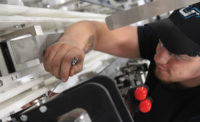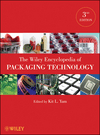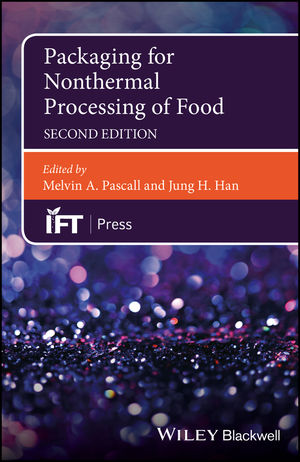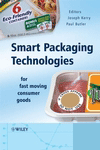Machinery Technology: Case Packing
How to optimize the end of a flexible packaging line
Bag Sealed, Case Closed






Flexible bags remain one of the most popular formats in the snack food industry due to their excellent barrier properties, cost-effective production and consumer convenience. Automation and equipment innovation over the last few decades have made flexible packaging lines faster and more integrated than ever before. In particular, the main line has experienced significant performance breakthroughs with some baggers now reaching speeds of up to 250 bags per minute. However, as the demand for snacks increases around the world more focus is being placed on the end of the packaging line. Once a manual, time-consuming and labor-intensive process, the end-of-line is increasingly being updated with automatic case packing equipment. But, there is still plenty of opportunity to further improve efficiencies—if the right factors are considered.
Product requirements
Specifying the correct case packing solution is primarily determined by the type of product that needs packing. Product size, weight, material, density and air-fill, as well as case size and format are all important considerations. Delicate products like potato chips, for example, can break if knocked prior to being packed, as well as being damaged or missed by vacuum heads when in transition. As such, it is essential that products are assessed first for suitability, in case they require protection from shock, vibration or compression.
As well as assessing the nature of each product before selecting a case packer, there are also key considerations for the cases themselves. For example, joints on regular slotted containers (RSCs) and half slotted containers (HSCs) can be thicker in some places than others, which can cause jamming issues on the line. Ensuring the correct alignment for the placement of cases in the machine can therefore help to reduce production downtime. Due to brands’ increasing demands for shelf-ready cases, case packing specifications now also need to outline any printing or branding requirements for secondary packaging at the beginning of the process.
Speed and flexibility
The desire to increase throughput without increasing footprint and compromising on reliability is an ongoing aspiration. Thanks to innovation in the sector, fully automated case packing systems can now reach a throughput of up to 300 bpm.
In addition to speed, maintaining a flexible production line has also become more important than ever before. The number of factories operating on “just-in-time” production has risen significantly in recent years, as part of growing consumer demands for product freshness, as well as lowering costs for manufacturers via reduced handling and warehouse space.
For operators who are increasingly stretched for time, it is minutes, not hours, that are now the standard benchmark for system changeovers. The fast-paced nature of the snack food industry particularly, means that product varieties are constantly changing, which has a subsequent impact on case packing operations. The ability to easily change over operations without causing excessive downtime or impacting speed of production is a critical consideration that can severely affect operators’ profits. To ensure that can happen, tool-less changeovers are now standard practice, often requiring no more than 10 minutes to complete.
With changeable and increasing demand, as well as trends such as retail-ready and light-weighting becoming new focal points in the market, planning for flexibility and change is important, as retrofitting can be prohibitively costly. A flexible case packer that offers tool-less changeovers can therefore help to future-proof production lines, making it easier to make further changes and keep costs low.
Reliability
Ensuring merchants’ demands are met depends as much on the reliability of the case packing solution, as speed and flexibility. The type of machinery used can have a significant impact on the overall return on investment, with a number of technical factors to consider. For example, reducing the number of moving parts can reduce component wear, which could help increase longevity of the case packer. It is also important to choose case packing equipment specifically designed to integrate with vertical form fill and seal (VFFS) systems, to ensure maximum compatibility, reliability and productivity.
Reducing dependency on pneumatic actuators in the machinery will also help to avoid costly breakdowns. Pneumatic air cylinders are expensive to use, as they require high levels of power, and are often the cause of production stoppages. Similarly, vacuum heads must be specified correctly—or avoided altogether—to prevent dropped, missed or damaged bags holding up the packing process.
Energy usage
There are a range of features in case packing equipment that can help to minimize energy usage. Systems with a low number of pneumatic components, a built-in standby mode and fewer reciprocating movements will allow manufacturers to reduce operating costs and pursue sustainability ambitions, while being able to maintain reliability. This is in line with the recent trend for light-weighting, as packaging operators are continuing to use thinner bags, thinner corrugated board and thinner cartons. Machines have been adapted accordingly, which has had a positive effect on energy consumption, and consequently, sustainability.
Footprint
Factory space continues to cost operators a premium, which is why maximizing the use of floor space is more critical than ever. Automated and highly integrated lines are often spaced close together. However, this can limit operator access. While case packers require additional space at the end of the line, it can increase productivity throughout the manufacturing process, and should be a key consideration for manufacturers.
For factories where space is limited for manufacturing lines, there are several options to ensure best practice. Focusing on equipment reliability is recommended, as this allows generous tolerances for material variations. Innovation in the case packing arena has also meant there are more compact machinery dimensions available, with a wider range of configuration options. For example, twin configurations and mezzanine options for case erectors can easily optimize floor space, enabling the placement of a case packer after every bagger. Twin configurations, where left-hand and right-hand facing units are placed up against each other, are expected to rise in popularity as they maximize the use of floor space by eliminating the gap between pairs of manufacturing lines, while still enabling operator access.
Maintenance
Beyond finding reliable equipment in the first instance, it is also important to consider the ongoing operational costs of the case packing system. In fact, the right maintenance process can minimize the impact on production, due to scheduled and unscheduled downtime. It is also worthwhile looking at the long-term maintenance costs over a case packer’s lifetime, as well as initial costs, as part of an asset management plan.
Gathering information from current users of the equipment on consumables, maintenance frequencies and cost of parts and repairs will be useful information, as part of evaluating total expenditure costs. Operating simple machinery is the key to an efficient maintenance plan, and this can be done by ensuring that case packers incorporate basic features, such as easy access to electrical cabinets, water resistant materials and simple roof removal. Plus, the fewer the components, the easier the machine is to clean, which ensures a low-maintenance solution. These features should be periodically reviewed, as part of assessing the potential total cost of ownership of each case packing machine.
Case packing continues to be an integral part of snack food manufacturing and should be a key consideration when looking to speed up production lines and save costs. There are plenty of potential options and considerations for operators when selecting the right case packer, including speed and flexibility, reliability, energy efficiency, footprint and maintainability. A detailed assessment of individual requirements, such as product type, line speed and factory layout are crucial in determining the best end of line solution.
tna is a global supplier of integrated food processing and packaging solutions with 35 years of industry experience and over 14,000 systems installed across more than 120 countries. The company provides a comprehensive range of products including materials handling, coating, distribution, weighing, packaging, inserting and labeling, metal detection, verification and end of line solutions.
For more information, visit tnasolutions.com.
Looking for a reprint of this article?
From high-res PDFs to custom plaques, order your copy today!






.jpg?height=200&t=1740587300&width=200)






